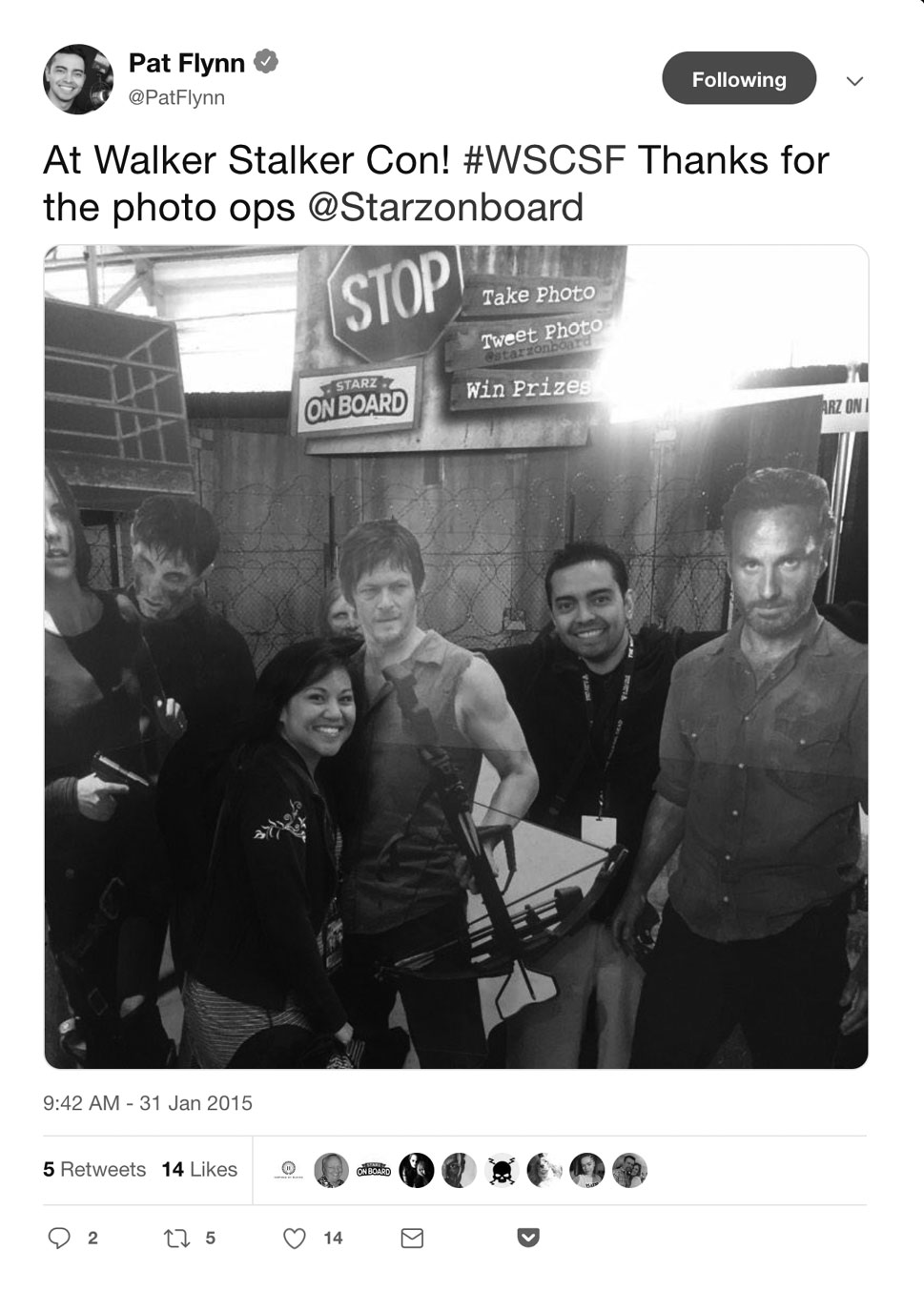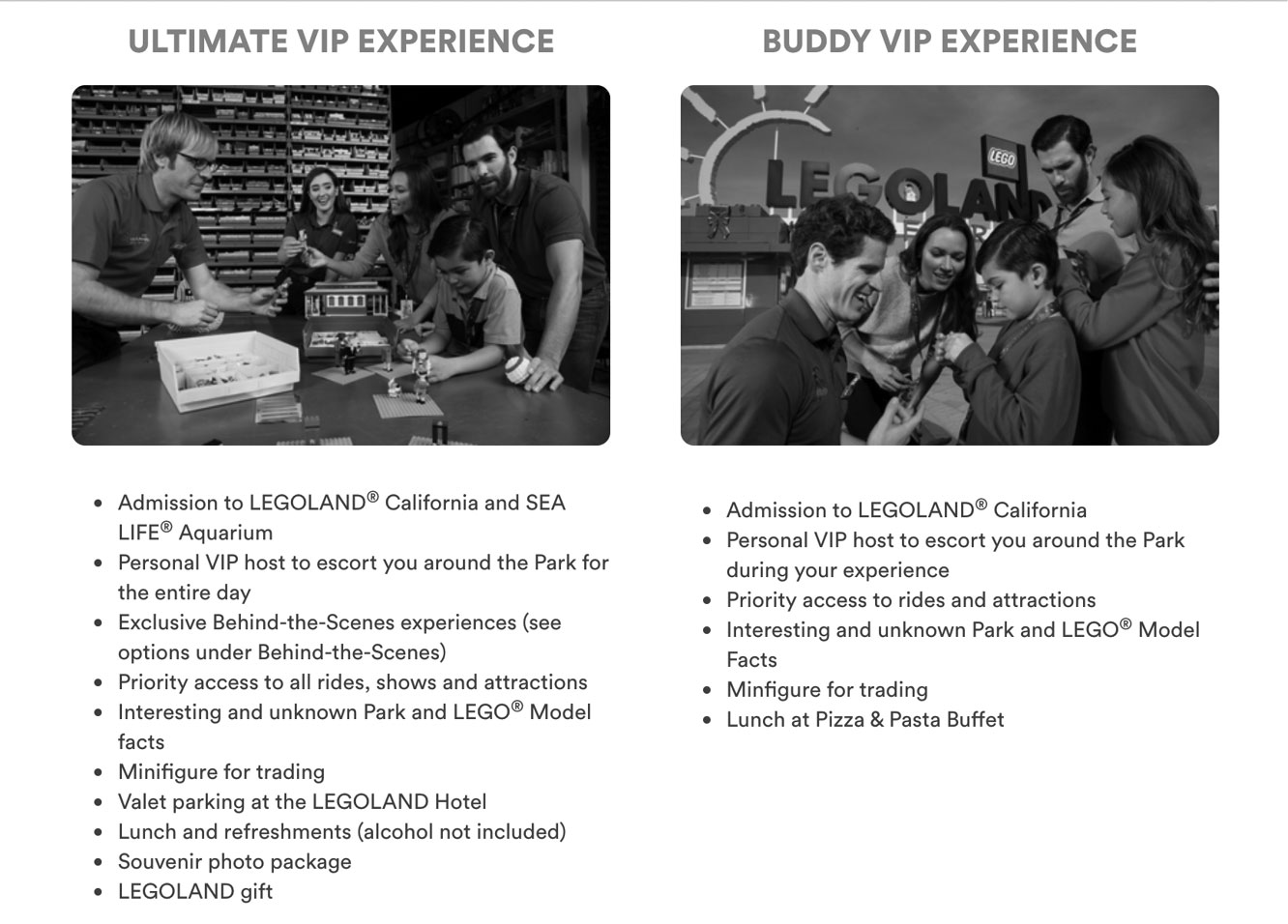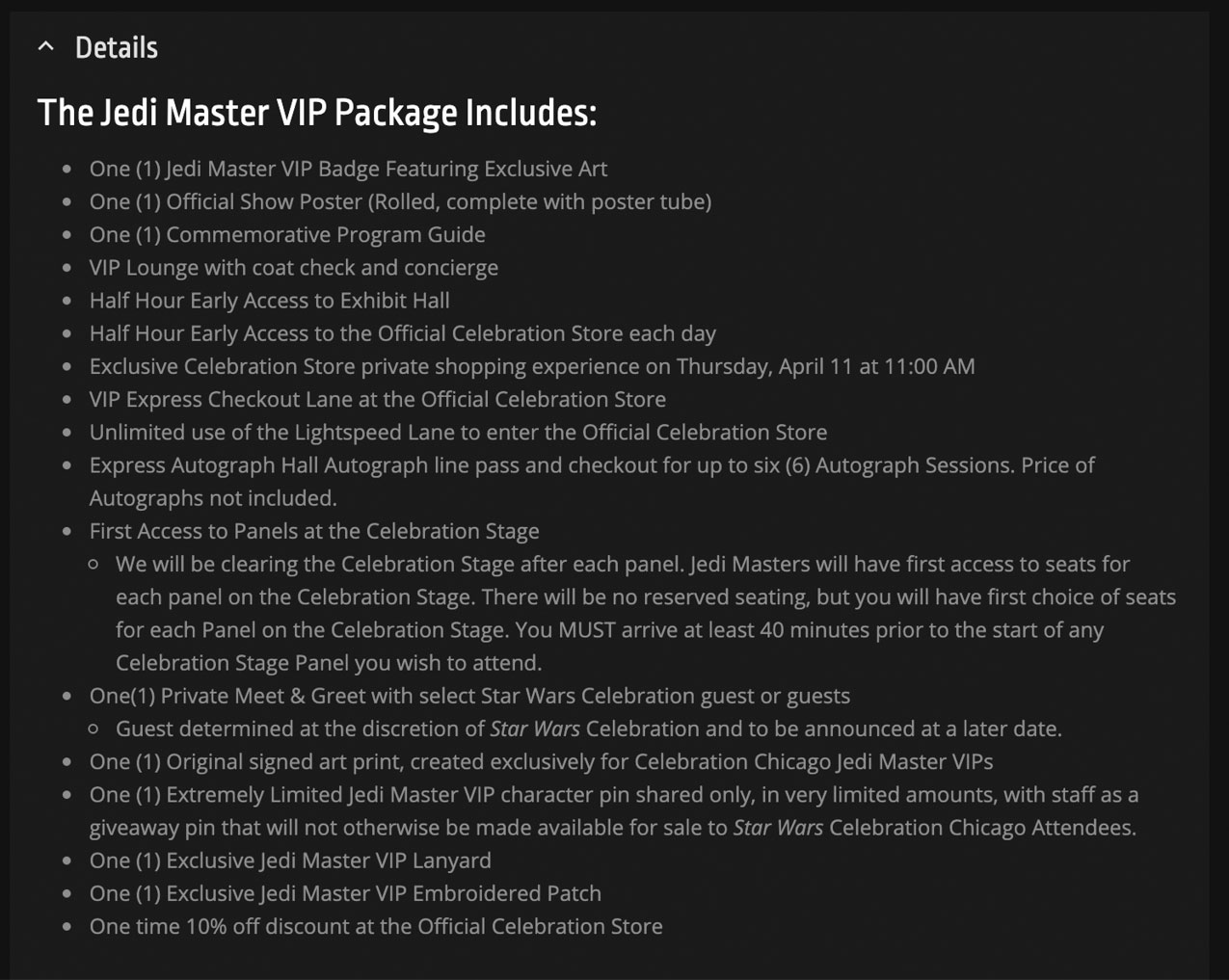Chapter 17
Baseball. Summertime. Sunshine. Hot dogs. The wave. Sitting in the grandstands with thousands of other raving fans who’ve flocked together to cheer on their favorite team. You’re cramped but still pretty comfortable, and enjoying the whole scene. It’s one of those quintessential experiences that never gets old.
Then you get a text from your buddy.
“Hey, are you at the game?”
“Yeah! You?”
“You bet. Where are you sitting?”
“Section 103, out in left field. You?”
“Oh, we managed to get box suite tickets. It’s great! They’re wining and dining us! A couple of Hall of Famers just stopped by randomly. They autographed some game balls for the kids!”
Suddenly, your quintessential summer experience starts to feel a little lackluster. It’s still great, but . . . not as great as that.
The VIP experience—special access to unique and rare experiences and perks, like the box suite with the Hall of Famer cameos—is a superfan catalyst. It’s a special tier you add to your offerings to satisfy, delight, and reward your superfans—the people who, as Kevin Kelly says, “will buy anything you produce”—and for others in your audience to aspire to.
Let’s look at another example. In the past decade, Spotify has become one of the most popular music streaming services in the world—and one of the most innovative brands in terms of providing customers access to special experiences they can’t get anywhere else. Through its “Fans First” program, Spotify identifies and rewards fans of various bands with early sale concert tickets, special ticket offers, exclusive merchandise, and invites to unique events.
Spotify’s Fans First team works with artists to craft unique experiences and merchandise for the band’s superfans, then crunches user data to figure out who those fans are. It emails the superfans with an opportunity to get in on the promotion. These promotions have included things like an intimate concert with the band Arcade Fire in New York City, or even off-the-wall events like baking cookies with singer-songwriter Ed Sheeran or afternoon tea with country artist Kacey Musgraves. They also include limited edition releases of bands’ music—like the Foo Fighters, who we heard about in chapter 13, who collaborated with Spotify in 2017 to deliver a select group of fans an exclusive black-on-black vinyl pressing of their latest album, Concrete and Gold.
A quick search of some of the one-of-a-kind experiences Spotify has helped artists create for their biggest fans reveals how it has not only given those fans rare opportunities to get closer to their idols, but also added small touches to remind fans who’s behind it all. Whether it’s the all-access passes labeled “#SpotifyFansFirst” around the necks of roughly two hundred super-lucky fans of the band Interpol at the special press release in Mexico City announcing their 2018 album, or the backlit Spotify logo that graces the stage at the super-intimate Fans First concerts, these reminders help connect each magical experience in fans’ minds to the brand that made it happen for them.
By allowing fans to make a rare, intimate connection with their favorite artists—and reminding them who brought it all together—Spotify is inserting itself into the connected communities of those artists’ superfans, and setting those fans on their way to becoming superfans of Spotify itself.
If you go out of your way to provide your most dedicated fans with special access to events and experiences they’ll never forget, you’re going to cement their loyalty, whether you’re a famous rock band, a music streaming service, or the creators of a series of fan conferences based on a TV show about zombies.
We ended the last chapter talking about Eric and James, the creators of The Walker Stalkers Podcast and the Walker Stalker Cons, all based on The Walking Dead TV show. Although I’ve liked the show ever since it debuted on Halloween 2010, I didn’t really love it until I had my own VIP moment, one made possible because of the special access April and I were given to a Walker Stalker Con in 2015.
I’ll tell you all about that in a minute—but first let me set the stage. Walker Stalker Con is a convention for The Walking Dead fans—sort of like Comic-Con, but for zombies. (And yes, many people dress up in zombie cosplay.) With The Walker Stalkers Podcast growing in popularity, Eric and James wanted to see if they could bring their fans together and put on an event. Now they host multiple conventions all over the world each year, the biggest one being in Atlanta (where the show is filmed), which attracts over twenty thousand fans. The actors of the show attend, and it’s grown into quite an empire. Inc. magazine recently featured a story on the duo and how they turned their zombie fandom into an $11 million business. It’s gotten so massive that they’ve even expanded it to include a Walker Stalker cruise each year.
I’m super thankful that Eric always gives me credit for inspiring him to start The Walker Stalkers Podcast back in 2012, which is where and how this all began.
In 2015, Eric and James gifted April and me two VIP tickets to the Walker Stalker Con taking place in San Francisco—and of course, we couldn’t pass him up on this amazing offer. We didn’t know what to expect, but it turned out to be one of the most memorable experiences my wife and I have ever had together.
Here’s how it all unfolded.
After arriving, we were greeted by a person wearing an event shirt. To our surprise, he already knew us by name. He escorted us around the huge registration line and gave us badges with big, bold letters on the bottom that read “PLATINUM.” We were already feeling pretty special at this point. Then, he showed us where the Q&A was happening—a large room with thousands of chairs, and we were going to sit right up front. He also showed us the floor where the actors and actresses were going to sign autographs, with a very clear section in each booth that said “platinum.” Our passes meant we’d always get to go first, no matter how long the line was. We were also gifted a photo op with three celebrities happening later that afternoon. Finally, our escort showed us the lunch area for platinum pass holders, the same place the celebrities would be eating.
Along the way, we were introduced to a group of people dressed up as characters from the show. They were also platinum pass holders, and we later found out they were a traveling group known as Reel Guise (find them on Facebook) that goes to most of the Walker Stalker Cons together. They were all made up to look just like the characters from the show. They even had the voices down. It was amazing.
Even without platinum access, I’m sure we would have had a great time, but I’m not going to lie—it felt really awesome to have all of those extras. We had a chance to experience some things only a few others did, and it made us enjoy the conference even more. We had conversations with celebrities, we took photos, and we were treated like royalty. It made us fall totally in love with the show and cast, and, of course, with Eric and James.
That definitely wasn’t the last Walker Stalker Con we’ve attended. Nor was it an experience we kept to ourselves. When you give your people special, platinum access, to anything, be it backstage at a concert or insider info that isn’t public knowledge yet, it gives those people a huge reason to share. In addition to forging a stronger connection to the brand, the special treatment and access April and I got at the Walker Stalker Con made us feel compelled and excited to share our experience far and wide on social media.

You see, sharing happens for two main reasons:
- Because we love to tell stories. We want to show people things they may not have seen before, to share in the excitement we experienced.
- Because it elevates our status.
For that second reason, we can learn from a simple, yet surprising, experiment conducted by the people at the Science Channel and captured in a 2015 YouTube video.11 A team from the Science Channel set up a velvet rope around the bench at a public bus stop, then offered people access to the “VIP bus stop experience” for $2 a pop.
It wasn’t long before three men approached and were offered a chance to join the VIP section. After thinking for a few seconds, they accepted the offer and handed over $6 to cram together on the roped-off bench.
“Do you guys feel like VIPs?” asked the bouncer who had given them access.
“Yeah, it’s special,” said one.
“Yeah,” said another one.
“It’s really . . . ” continued the first man, in slight awe of the experience. “You know, like, I never . . . This is a great idea.”
Eventually, it dawned on the three men that the guy who’d charged them $2 each to sit sandwiched on a public bench didn’t work for the transit authority, and that they’d handed over their money not because they were receiving any tangible perks in return, but simply so they could feel like they were special. They did it simply because of the self-esteem boost they’d get from feeling “roped off” from everybody else for a little while.
According to Riaz Patel, a clinical psychologist interviewed for the video, “People crave status almost as much as they crave money. The more we have status, the more we have approval. Status is a way of achieving approval without actually having to ask for it.”
Thankfully, the three guys on the bench got a kick out of the whole experiment, erupting in laughter when they realized what they’d fallen for.
Now, I’m not suggesting you trick people into paying you more so they can experience the equivalent of a regular bus stop with a velvet rope around it. That would be deceptive and wrong. But you can still use this trick of human psychology to your advantage, by tapping into people’s innate desire to feel special and to have an experience that’s not available to everyone else.
When you’re creating events, make sure to build in a VIP package that adds real, tangible value to people’s overall experience. The people most likely to take you up on such an offer, and yes, pay more money for that premium experience, are your dedicated fans, the superfans and almost-superfans who see the value in the offer. But here’s the thing: You’re not creating those experiences only for the people who will be paying for them. You’re also creating them for everyone else, by giving them a chance to see what they could be experiencing.
This strategy works ideally when applied to live events, like the ones we’ve talked about in this chapter so far, as well as in chapter 10. Bigger live events take a lot of effort and planning. And if you’re going to the trouble to create your own live event, it’s well worth a little extra time and effort to build in some special access opportunities for your VIPs. What could these opportunities look like for your event? Here are some ideas:
- An intimate lunch or dinner with you and a small group of others
- Early access to Q&A events
- Photo opportunities with you and other high-profile attendees
- Cool swag like signed books
In fact, several of those items are things I made available to VIP attendees at the first FlynnCon in 2019. I got this model by learning from VIP experiences other entrepreneurs have created for their own events, like the ones Chalene Johnson has offered at her Marketing Impact Academy and Smart Success Summit events. At these conferences, Chalene’s VIPs get access to the rooms early, front row seating at tables, time for pictures with Chalene, a special party just for them, and an exclusive Q&A with Chalene.
In fact, when I was putting together FlynnCon, a number of people told me it would have been nuts not to offer this kind of special access, because it’s precisely the kind of experience that superfans and almost-superfans want and expect from such an event—even if it may seem ridiculous to others.
Thankfully, the barriers to entry to creating your own platinum access experience are much lower than you might expect. You can easily have swag made, like t-shirts, bags, pins, and even action figurines. Setting up things like early access to Q&As, photo ops, and even VIP meals mostly requires a little advanced planning, but not that much in the way of logistics. Trust me: The lion’s share of your time and energy is going to be spent putting on the event as a whole, so once you’ve got the foundation down, adding these perks on top is not going to be a huge deal for you—but it will definitely be one for the fans who take you up on that VIP experience.
Need a little more inspiration for how to create a VIP package for your next event? Check out the two options for a VIP experience at LEGOLAND California Resort:12

Priority access, cool gear, a meal or two . . . totally doable, right?
Or take a cue from what’s on offer in one of the coolest premium packages I’ve seen, the “Jedi Master VIP” option for the 2019 Star Wars Celebration in Chicago, an annual fan gathering billed as “the ultimate Star Wars fan festival.” This festival has taken place each year since 1999 in a different city, and it’s a weekend-long Star Wars experience featuring cast and crew appearances, Star Wars cosplay, exclusive merchandise, live entertainment, screenings, behind-the-scenes panels, exhibits, and “never-before-seen glimpses into the future of Star Wars.”13

The screenshot of all the perks kind of speaks for itself—that’s an awesome list of items and experiences. But again, they almost all fall into a couple of the categories we’ve already outlined: early and exclusive access to events, along with cool swag. This is a pretty impressive-looking list that would make any Star Wars superfan swoon, but trust me: You can pull off something like this, too.
That brings me to my final point, which is that creating a platinum access experience should never—I repeat, never—come at the expense of the experience for the general attendee. The baseline experience you provide for people should always be awesome—you just want to offer something that’s even more awesome for the people, the devoted fans in your audience, who are willing to pay for it. A truly honorable VIP experience is one in which you make sure that you’re not compromising the integrity of the connected community by creating a huge gulf between your VIPs and the rest of the attendees; you’re just giving those VIPs special perks and access here and there.
The VIPs get to enjoy the same delicious cupcake everyone else is eating. Theirs just has a cherry on top.
One of the best parts of this strategy is that you don’t have to host a big event to put it into action—even a birthday party can suffice. Kevin Schneider is a resident of Evanston, Illinois, in his forties with a developmental disability. He’s also a superfan of the sport teams at Northwestern University in Chicago. As of 2012, he managed to attend roughly fifty or sixty Northwestern athletic events each year.
He was also a fixture in the athletic department’s offices, someone whose joy and love for sports radiated from him. According to Northwestern’s then associate director of athletic communications, Doug Meffley, Kevin was an ever-present part of the scene. “Somewhere along the line, [Kevin] just became part of the fabric around here. I don’t know a Northwestern that Kevin wasn’t a part of.”
All the way back in 1990, Kevin started collecting schedule cards for all the teams Northwestern played. When one of Northwestern’s squads went on the road, Kevin asked them to bring him back cards from all the teams in the area. But it wasn’t always easy or possible to get cards for Kevin, given time and travel constraints.
The folks at Northwestern wanted to do something to thank and reward Kevin for his immense support—and helping him fill out his schedule card collection seemed like the perfect opportunity. So, for Kevin’s birthday in 2012, one of the staff members in the athletic department decided to launch a Schedule Cards for Kevin campaign. To support the campaign, Meffley wrote a blog post asking Northwestern alumni and fans to pick up schedule cards at their local games and drop them in the mail for Kevin.
Meffley didn’t expect much of a response—but he was blown away by what happened.
“Little by little, packages and cards started coming in, and as it continued to be shared and show up on different blogs, the trickle became a flood,” Meffley says. In all, the campaign brought in approximately five hundred envelopes and packages, containing many thousands of schedule cards.
Meffley and the athletic department threw Kevin a thirty-sixth birthday party where they presented him with the cards. It was the perfect way to thank this ultimate fan for the love and joy he’d brought to Northwestern athletics for decades.14
By now, you’ve likely already developed some superfans, so give them the VIP experience they crave—and give the other dedicated fans in your audience a superfan nudge, something to look up to and plan for the next time they attend your event.
11 Science Channel, “Would You Pay for the VIP Bus Experience?,” (May 6, 2015), https://www.youtube.com/watch?v=XS6-V33kRFQ
12 “VIP EXPERIENCES,” (Accessed April 22, 2019), https://www.legoland.com/california/legoland-california/buy-tickets/vip-experiences.
13 “Ticket Details,” (Accessed April 22, 2019), https://www.starwarscelebration.com/About/Ticket-Details.
14 You can read more about Kevin’s story at http://www.thepostgame.com/blog/good-sports/201209/kevin-schneider-northwestern-wildcats-schedule-cards.